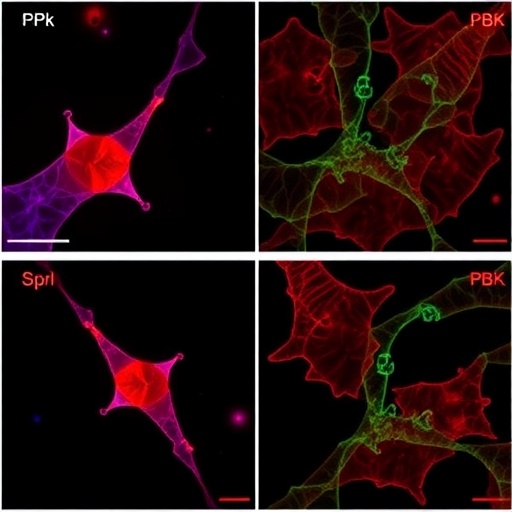
In the quest to understand the roots of substance use among young individuals, recent meta-analytic findings have transformed our understanding of the parental influences that shape such behaviors. A groundbreaking study authored by Pinquart and Gochaliyev, published in the International Journal of Mental Health and Addiction in 2025, delves deep into the relationship between parental warmth and substance use in offspring, synthesizing diverse research to present a compelling narrative about family dynamics and adolescent risk factors.
Parental warmth, often characterized by affection, support, and nurturing behaviors, has long been considered a vital ingredient in healthy child development. However, its specific effects on the propensity of offspring to engage in substance use have been variably reported, with conflicting evidence clouding the interpretive landscape. By aggregating data across numerous empirical studies, Pinquart and Gochaliyev have provided clarity, asserting a consistently inverse relationship between parental warmth and substance use in young people.
The researchers employed meta-analytic techniques, which statistically combine results from multiple studies to derive a more precise estimate of effect size and overall trends. This methodology is particularly powerful in behavioral sciences, where individual studies may be limited by sample size, demographic constraints, or measurement variations. In pooling data, the authors enhanced the robustness and generalizability of their conclusions regarding parental warmth as a protective factor.
.adsslot_NSXAEzDIuh{width:728px !important;height:90px !important;}
@media(max-width:1199px){ .adsslot_NSXAEzDIuh{width:468px !important;height:60px !important;}
}
@media(max-width:767px){ .adsslot_NSXAEzDIuh{width:320px !important;height:50px !important;}
}
ADVERTISEMENT
One salient finding among the extensive dataset is that offspring who experience high levels of parental warmth show significantly reduced rates of tobacco, alcohol, and illicit drug use compared to their peers reporting lower parental warmth levels. This inverse association underscores parental warmth not merely as a background variable but as an active preventive force that can attenuate tendencies toward risky substance behaviors.
Underlying mechanisms proposed by the authors suggest that parental warmth fosters emotional security and self-regulation skills in children, which in turn diminish the allure or perceived need for substance use as a coping strategy. Warm parenting may also engender stronger parent-child bonds, thereby enhancing communication and supervision, both known buffers against early initiation and escalation of substance use.
The meta-analysis also explores moderating variables that nuance the relationship between warmth and substance engagement. For instance, cultural context appears to influence the strength and nature of this association. In collectivist cultures where family cohesion is emphasized, the protective effects of parental warmth may be even more pronounced, reflecting deeper values around interdependence and social harmony.
Age and developmental stage are additional important moderators considered. The impact of parental warmth is most salient during early adolescence, a critical period when youth are particularly vulnerable to peer pressure and experimentation. During this window, parental support seems to act as a vital counterbalance, fostering resilience against substance use temptations.
Gender differences were another aspect analyzed in this study. While both male and female offspring benefit from warm parental interactions, some evidence points toward a slightly stronger protective effect among females, potentially linked to differing socialization pathways and emotional responsiveness. However, the authors caution that further research is necessary to conclusively delineate these gender-specific trajectories.
From a methodological standpoint, the meta-analysis meticulously addresses potential publication bias and heterogeneity among studies. By applying advanced statistical corrections and sensitivity analyses, Pinquart and Gochaliyev ensure that the conclusions drawn are not artifacts of biased reporting or sample variability, thereby reinforcing the scientific integrity of their synthesis.
The implications of these findings are profound for both clinical practice and public health policy. Interventions designed to enhance parental warmth—through parent training, family therapy, or community support programs—could yield substantial reductions in adolescent substance use rates. Such preventive strategies, grounded in strengthening parent-child relationships, may prove cost-effective and culturally adaptable.
Furthermore, the study invites a reevaluation of societal narratives that sometimes stigmatize parental roles, especially in high-risk environments. By highlighting the tangible benefits of warmth and positive engagement, this research offers a hopeful message that parental influence remains a pivotal lever in the fight against youth substance misuse.
Looking forward, the authors advocate for longitudinal studies employing fine-grained behavioral assessments and biomarker data to unravel the causal pathways linking parental warmth and substance use more definitively. Integration of neurodevelopmental perspectives could additionally illuminate how early emotional experiences shape neural circuits involved in addiction vulnerability.
In sum, this meta-analysis adds a vital piece to the complex puzzle of substance use etiology, emphasizing that parental warmth is not just an abstract ideal but a measurable, influential force in deterring risky behaviors among offspring. As addiction remains a persistent global challenge, such insights are invaluable in guiding effective prevention efforts that start at home.
By crystallizing the protective role of parental warmth across diverse populations and substance types, Pinquart and Gochaliyev’s work sets a new standard for integrative research. Their findings beckon practitioners, educators, and policymakers to prioritize family-centered approaches that cultivate emotional warmth and supportive caregiving as cornerstones of adolescent health.
Ultimately, this comprehensive analysis reaffirms a timeless truth underscored by contemporary science: the warm embrace of a caring parent can be the strongest shield against the perils of substance addiction, shaping lives in profound and lasting ways.
Subject of Research: Associations between parental warmth and substance use in offspring.
Article Title: Associations of Parental Warmth with Substance Use in the Offspring: A Meta-Analysis.
Article References:
Pinquart, M., Gochaliyev, Z. Associations of Parental Warmth with Substance Use in the Offspring: A Meta-Analysis. Int J Ment Health Addiction (2025). https://doi.org/10.1007/s11469-025-01488-0
Image Credits: AI Generated
Tags: affection and support in child developmentbehavioral science research methodologieseffects of nurturing behaviors on youth substance useempirical studies on parental warmthfamily dynamics and addiction risk factorsimpact of family environment on youth behaviorinverse relationship between parenting styles and substance usemeta-analysis of parental influenceparental warmth and adolescent substance userole of affection in healthy child developmentsubstance use prevention through parentingunderstanding adolescent risk factors





